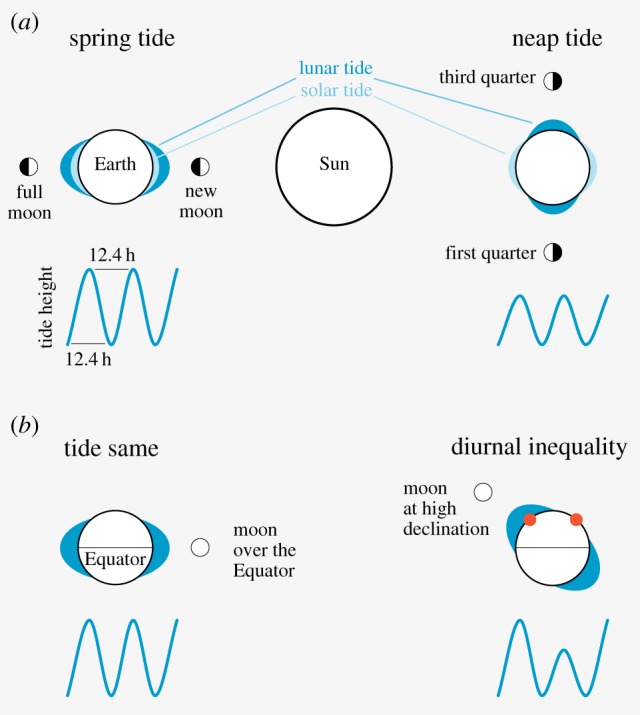Figure 1.

Variation in high-tide levels. (a) When the Sun, Moon and Earth are in alignment during new or full moon (i.e. twice a month) the gravitational pull on the oceans is strongest, producing the high-amplitude spring tides, i.e. lunar tide (dark blue) and sun tide (light blue) combine. In contrast, when the Moon is in its first or third quarter the gravitational pull on the oceans is reduced, leading to the low amplitude neap tides. (b) If the Moon orbits directly over the Equator, the day and night tides are similar, whereas when the Moon orbits at high declination the night tides are higher than the day tides (diurnal inequality; indicated by red dots).
